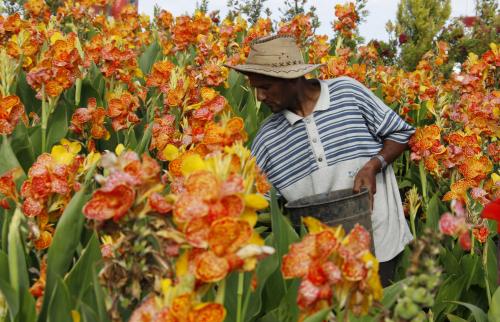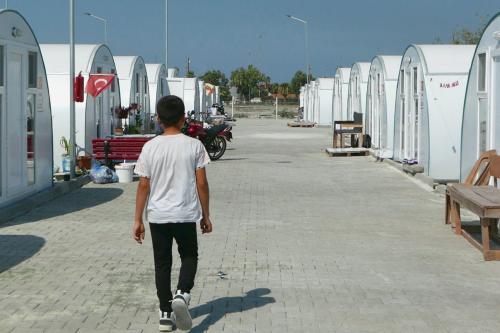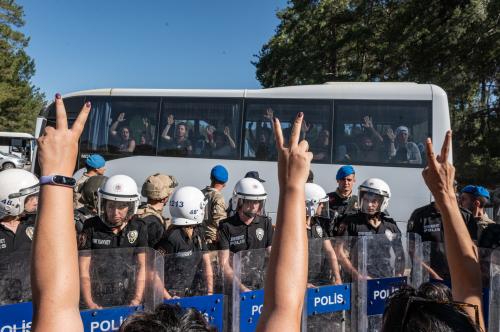The scene is all too familiar for many Filipinos. Just over a year ago, Typhoon Haiyan tore through the Philippines, displacing millions and leaving 7,300 dead or missing. On Saturday, Typhoon Hagupit made landfall in Eastern Samar, one of the provinces hardest hit by Haiyan, with gusts of up to 130 miles per hour.
For all their distressing similarities, this is a different storm and has prompted a very different response. While Haiyan was the strongest typhoon recorded over land, by the time Typhoon Hagupit hit Eastern Samar it has slowed to the equivalent of a category three hurricane. The potential for devastation remains as the storm is moving slowly across the country, bringing with it torrential rains, and the risk of floods and landslides. But despite early fears this is, thankfully, a much weaker storm. Even more importantly, this time round most Filipinos and their government were not taking any chances. In advance of Hagupit’s landfall, some 1.2 million people left their homes to take shelter in evacuation centers, in one of the largest peacetime evacuations in history. Across the Philippines, schools, churches and community centers often double as evacuation centers, and in towns and villages that were hard-hit by Typhoon Haiyan, many of these buildings have not yet been reconstructed. Nonetheless residents have crowded into the safe spaces that remain, following the government’s urging to make this a “zero casualties” disaster.
I’ve been following Typhoon Hagupit’s track with particular interest as I arrived in the Philippines last week to conduct some fieldwork for a study on the challenge of supporting “durable solutions” to displacement crises after massive natural disasters such as Typhoon Haiyan.
I’ve been following Typhoon Hagupit’s track with particular interest as I arrived in the Philippines last week to conduct some fieldwork for a study on the challenge of supporting “durable solutions” to displacement crises after massive natural disasters such as Typhoon Haiyan. Our research team had intended to travel to Tacloban (a city devastated by Typhoon Haiyan) a few days ago to conduct interviews and focus groups on post-Haiyan recovery with local leaders and community members. But with Hagupit bearing down and attention rightfully focused on disaster preparedness, we decided to sit tight in Manila.
This is not the first time my research on displacement and natural disasters has been upended by further storms. In 2012, I was in New Orleans conducting interviews on obstacles to the return of residents uprooted by Hurricane Katrina, when Hurricane Isaac arrived just in time for Katrina’s seventh anniversary. My own bad timing aside, these repeated disasters raise questions about what it means to “resolve” displacement in communities that remain deeply vulnerable to disaster because of their geographic location and the increasingly severe effects of climate change. In the Philippines as in Louisiana, massive disasters such as Haiyan have been met with the suggestion that the residents of low-lying coastal communities should be relocated to higher ground, for their own long-term safety. In some instances relocations may indeed be a necessary step for public safety, but in others forced relocation can represent a form of displacement in itself, cutting people off from their livelihoods and community networks.
After the massive floods in metro Manila in 2012 – another of the many disasters to hit this hazard-prone country – an expression went viral: “The Filipino spirit is waterproof.” Yesterday I came across a collection of posters celebrating this theme, and was reminded of the “Soul is waterproof” slogan that was promoted after Hurricane Katrina. The fighting spirit of communities that must struggle to recover from disasters at the same time as new storms bear down on them is indeed remarkable, and yet it is no substitute for systematic disaster preparedness, prudent evacuations and equitable, nuanced reconstruction plans that respond to communities’ diverse needs. So far the response to Typhoon Hagiput has been characterized by careful planning, with evacuations avoiding massive casualties and reducing the need for Filipinos to once again draw heavily on their famously resilient national spirit. Let’s hope it stays that way.



Commentary
Not Taking Chances: The Philippines Weathers Typhoon Hagupit
December 8, 2014